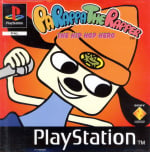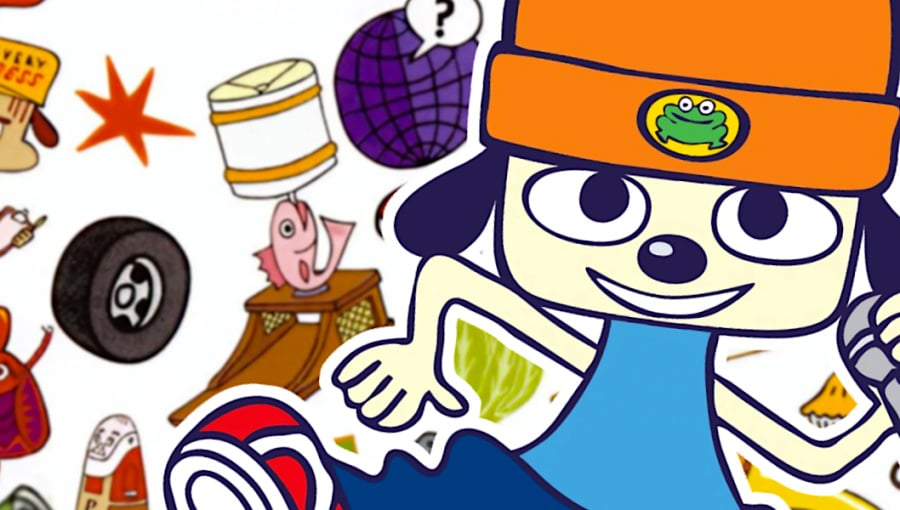
In December 1996, Sony Computer Entertainment published the video game PaRappa the Rapper in Japan – a groundbreaking title about a paper-thin rapping dog on a quest to win the heart of his beloved (a humanoid flower named Sunny Funny).
Developed by NanaOn-Sha – a game company that was founded several years earlier by the Japanese pop star Masaya Matsuura (of the band Psy•s) – the title went on to become a worldwide sleeper hit and has since acquired a passionate fanbase thanks to its charming visuals (designed by the American artist and graphic designer Rodney Greenblat) and its memorable tunes featuring catchy lyrics about everything from learning karate (“Kick! Punch! It's all in the mind”) to needing the restroom.
It has also – more importantly – been credited as the title that kickstarted the rhythm game genre, establishing a bunch of design elements that would later appear across various games that followed like Sega’s Samba De Amigo, various “Bemani” projects, and the Rock Band and Guitar Hero franchises.
Over the last month, we’ve had the pleasure of chatting back and forth with Matsuura-san about his work on the PaRappa the Rapper but also took this amazing opportunity to dig a little deeper into some of the other lesser-explored areas of his career as well. This includes his initial steps into the world of software development with the Multimedia Grand Prix-winning The Seven Colors: Legend of Psy•s City.
In addition to this, we also got to hear his opinions on how he approached music, spoke to him about why he was initially reluctant to dive headfirst into the making of PaRappa the Rapper 2, and how he hopes the Nintendo Switch 2 is a “mental switch” that turns a new light on for him. Below is our conversation (edited and condensed for clarity).
Time Extension: Before working in video games, you had a successful music career with your band Psy•s. Could you talk us through how you originally became interested in pursuing a music career?
Matsuura: Ever since I was a little kid, I have had an overwhelming love for music, so it was natural that I started playing and creating music. Now and then, music is pretty much all I think about. However, there is also a broader meaning to it. Music is often synonymous with and inseparable from a fairly wide range of things that exist in the human world, and some people may think of these as something other than music, but I feel them first and foremost from the perspective of music.
Time Extension: Could you elaborate on this? Do you mean like the famous John Cage quote, "Everything we do is music"?
Matsuura: I don't think I fully understand what John Cage means by this statement. But I might ask a question like, for example, is a musical music?
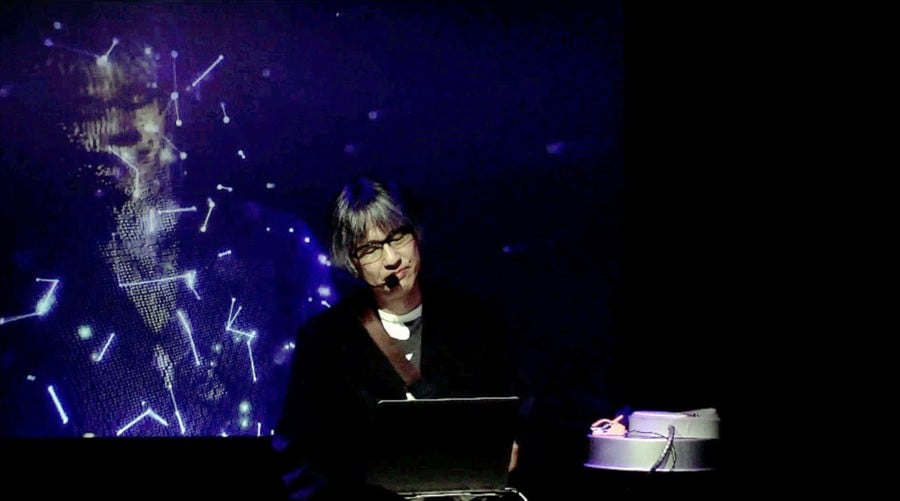
Time Extension: Ah, so you mean instances where music is present, but not necessarily the main focus? So some people may watch a musical or a film and see it as a complete package, but you experience it primarily through music.
Matsuura: Yes, so for many people, it is quite difficult to enjoy and evaluate music by separating it from other things. I sometimes try to ignore as many elements as possible that accompany the music and listen to it purely from the sound alone (I call this "Hazushi-giki"), but I don't always succeed... That’s how much I want to concentrate on music on a daily basis.
Time Extension: Early on in your musical career, you were introduced to a digital synthesizer called the Fairlight CMI, which was the first machine to coin the term “sampling”. How did the Fairlight CMI broaden your horizons as a musical artist?
Matsuura: There's no doubt that digital sampling methods played a big part in the foundation of my early musicality [and I learned a lot from the Fairlight because of how expensive it was...] However, at the same time, I still continue to think about and [try to] communicate the merits and demerits of various digital audio, starting from this technology.
At the 24th Vinyl event (2024.02.25), which I have been holding for the past three years, before playing The Art Of Noise's work, the audience listened to my demo of the same sound source, changing it from an ultra-low bitrate state to 96k/24bit. I wanted [to show them] that the recording process is inherently full of latent changes, and how positively you interpret that could have been the driving force behind the creation of a work like The Art Of Noise.
I think that my experience in the low-bitrate sound quality era motivated me to think about this issue, but at the same time, it's also a pain.
Time Extension: Given your background in music – what was your exposure to games prior to working on them? We’ve noticed in previous interviews never hear you speak about your experiences of playing games, or what titles influenced you. It seems like you’re quite unique in that regard as an artist, as your interest in the space seems to be an extension of your fascination with music, not a desire to emulate a particular company’s games (Nintendo, Konami, Capcom, Taito, etc) or fit into pre-defined genres or stereotypes. Do you have thoughts on this?
Matsuura: I think your point is correct. I think games naturally overlapped with my musical expression. Most of my experiences with gaming were from the 1980s when I was in my 20s. Pong, Space Invaders, Xevious, etc.

Time Extension: Did you ever feel self-conscious about having this different approach to your peers? Or did you see it as a strength to come from this other world? The world of music?
Matsuura: I don't think it was either. "Entering the gaming world" was a result of the PaRappa the Rapper becoming a hit. I didn't know anything about what other people in the gaming industry were doing at the time, and I still don't know much about it now. I only know my own music better than others, and I think I lack the generalized musical skills that are useful for a job. I've never compared myself to others, so I don't really know.
Time Extension: Looking online, it seems that the very first titles you are created as working on are the 1993 PC Engine shooter Metamor Jupiter, and the Macintosh game The Seven Colors: Legend of PSY・S City (which served as an interactive accompaniment to your band’s music). Could you tell us more about what it was like working on those earlier titles?
Matsuura: For the former, I only provided music, but it seemed like the production side featured my involvement in the advertising making it look like I was more involved. For The Seven Colors, we made it with our own team. I think we ended up making something game-like, but we had no active awareness of what category it belonged to.
Time Extension: Do you remember how the idea originally came about to create an interactive accompaniment to Psy・S’s music?
Matsuura: Music videos were at their peak at the time, but many of the Japanese ones were boring, and I think there was a desire to do something new to replace them.
Also, this is a somewhat abstract theme, but I have believed since relatively early on after the advent of personal computers that music should be "the program itself," rather than "data" that records and plays back performances as digitized sound recordings and frequency and time information. As a starting point, I worked on dynamically changing music data using a program. But I have not yet been able to fully realize this mission.
The recent AI boom has been met with criticism from people in the music industry, and while I agree with some of it, I think AI may be one step closer to my idea that "music should be a program." The reason is that in the past, there was only a one-way world where a program would spit out data and that was the end of it. However, AI learns from data and produces new results, meaning that a new cycle is created in which the data is again learned by the AI program, which is very interesting. This may be one step closer to my idea that "music should be a program."
Time Extension: How successful was The Seven Colors in your opinion? Did Psy・S’s fans embrace it?
Matsuura: For me, it was a great success, but I don't think it was a success in terms of business. Decades later, the sales rep complained to me that they had a hard time getting it into [game stores].
Time Extension: So they could only get Seven Colors into music stores?
Matsuura: [It was slightly more complex than that]. Since it wasn't a music CD, it couldn't be distributed through music distribution. Moreover, it was a mystery as to whether it was a game or not, so it couldn't be distributed through game stores either. At the time, there were shops that sold CD-ROMs for Apple Macs, etc. [We sold it there].
Time Extension: We’d also love to ask you some questions about Tunin’ Glue - NanaOn-Sha’s first game, which was released for Macintosh computers in 1996. We’re wondering, how did that project initially come about following Seven Colors?
Matsuura: Seven Colors was on macOS, so I had some interaction with the Apple people. Pippin was on macOS, so this time my involvement with Pippin came through the Apple people. It was a project full of various discoveries.
Time Extension: How so?
Matsuura: My memory is a bit hazy, but even though Pippin was a MacOS, the hardware environment was close to the minimum required for it to run, so the app had to save memory to the extreme.
However, one day, just as the launch of the hardware (which I thought was complete) was drawing near, they decided to add copy protection encryption to the software, which meant it needed to be put on a diet. Although I'm not a programmer, at the time, I felt like I was dying (laughs).
Time Extension: Was there anyone who worked on Seven Colors with you who went on to work at NanaOn-Sha on Tunin’ Glue?
Matsuura: Yes, there was. Ohmori-san, who was the recording engineer for Psy•s. He was the programmer for Tunin' Glue. We worked together almost until he retired from Sony Music Entertainment. I think he played a role similar to that of Roger Nichols in Steely Dan.
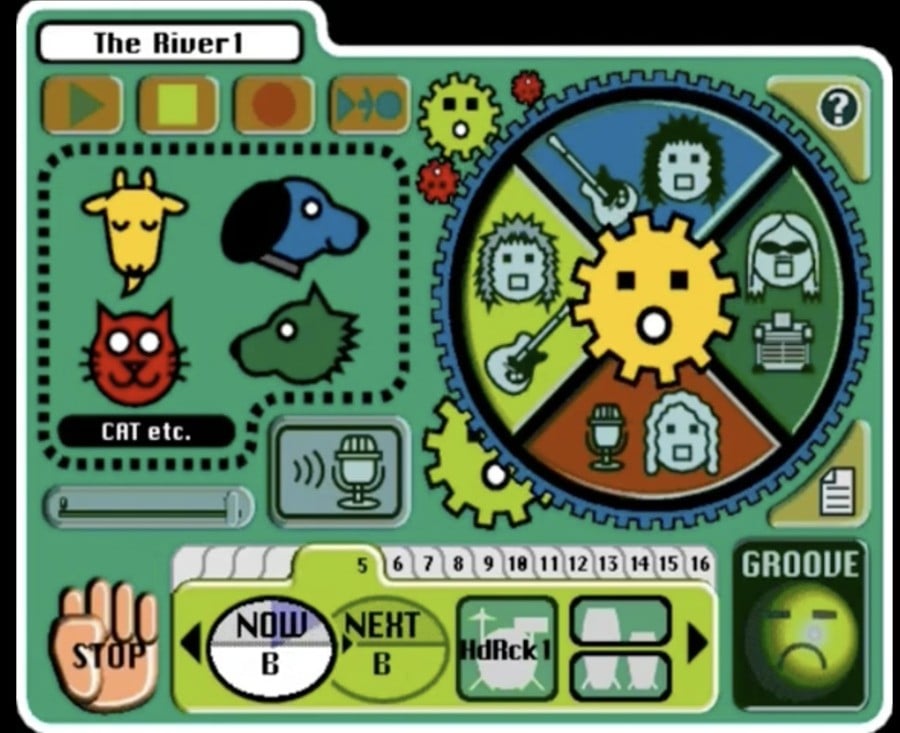
Time Extension: That’s fascinating. What do you think made your collaborations with Ohmori-san work so well? Did you both come from the same kind of musical background or share the same ideas about music?
Matsuura: I wonder... I think we were both people who thought in a scientific way, but when it came to making music, he participated as a recording engineer for Sony Music, and I think I was very grateful that he was sympathetic to others' lack of understanding and misunderstanding about making music with an unknown monster like the Fairlight.
Time Extension: PaRappa the Rapper obviously came out on the Sony PlayStation in 1996. We’d be interested to know, how did you first become aware of the PlayStation. What were your first impressions of the console?
Matsuura: I first met Kutaragi-san's team when they were still developing the Nintendo sound chip, and after many twists and turns, we became estranged, and then the PS1 was launched. I went to the first presentation that gathered licensees, and I remember Chairman Ohga's greeting, in which he described the project as "our undertaking," or in Japanese, "Kuwadate..."
Time Extension: Were you aware of Sony’s other experiments in the realm of music video games? There was an interesting title called Fluid (released as “Depth” in Japan in 1996), which was part underwater exploration game, part sound lab. It lets users create their own tracks from a bunch of unlockable samples. Did you ever meet anyone working on that game?
Matsuura: Yes. Fujisawa-san is one of the producers of PaRappa the Rapper, too. He is also known as the composer of the PlayStation boot sounds. I imagine this title probably started from a similar starting point as PaRappa the Rapper - the market just recognized one as a game and the other not.
Time Extension: You’ve mentioned before in interviews that Sony was initially unsure of how to market PaRappa the Rapper after it was finished. Some even told you “It was not a game”. Did that shake your confidence at all in what you had created?
Matsuura: I wonder? I always have a strong feeling and conviction for what I want to create, but I can only have it because it is a unique expression, so it is usually difficult for people to understand such things.
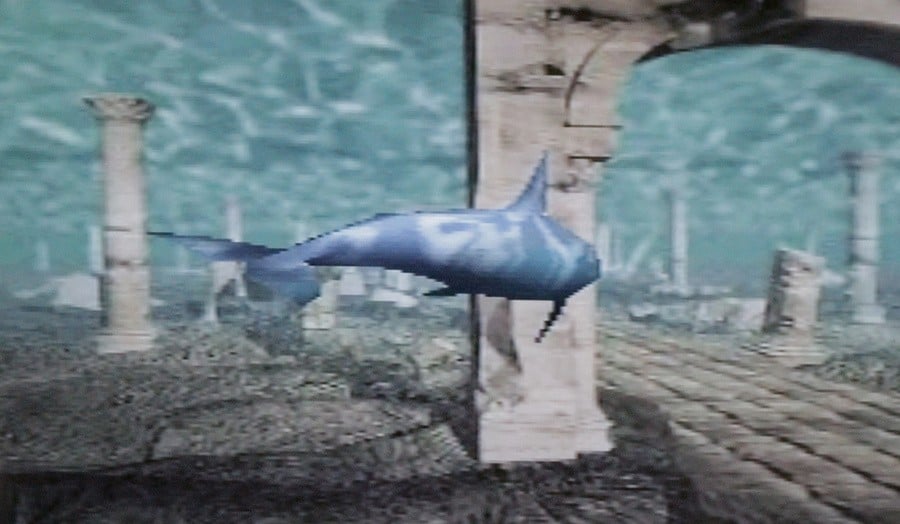
Time Extension: How long did it take before you realised the project was a success?
Matsuura: I think it was about a year. Sony Computer Entertainment's promotion was very smart. Hayashi-san from the promotion planning department ran advertisements and other things, and we sold a little bit every week.
Time Extension: Rodney Greenblat has previously said you avoided doing a typical sequel straight away, as it wasn’t your style. He said you always wanted “to turn everything upside down and do it backwards” and stated that if it was up to him, he would probably have done a sequel to PaRappa straight away, but he trusted your judgment. We’re wondering, why did the idea of Um Jammer Lammy excite you more than PaRappa 2 at the time?
Matsuura: At the time, I didn't think a sequel to PaRappa the Rapper would be made.
Time Extension: Why was that?
Matsuura: PaRappa the Rapper 1 depicted the highlight of a once-in-a-lifetime, important youthful period of a sensitive boy. Even if I could have continued that story, I never felt like making music or gameplay that was linked to it. For me, that idea is the opposite of what I thought it would be. More than that, my brain was empty and I was in a daze for a long time.
PaRappa the Rapper 1 depicted the highlight of a once-in-a-lifetime, important youthful period of a sensitive boy. Even if I could have continued that story, I never felt like making music or gameplay that was linked to it. For me, that idea is the opposite of what I thought it would be.
Time Extension: What changed to make you want to work on PaRappa The Rapper 2?
Matsuura: It was because there was a strong request from fans and Sony. By making Um Jammer Lammy and Vib-Ribbon, I was able to revive the circuits and emotions in my head. That allowed me to reassemble PaRappa the Rapper again.
Time Extension: Following PaRappa the Rapper, you ended up working on Vib-Ribbon. I believe I first encountered the game through a promotional demo disc released alongside Official PlayStation Magazine. It really surprised me with just how different it looked to everything else on the console, thanks to its “simple” wireframe art. What was the development of that game like in comparison to PaRappa? Were the challenges mostly technical?
Matsuura: Like the PaRappa the Rapper, there's too much to write about (laughs).
Time Extension: I guess to narrow things down then. You mentioned PaRappa the Rapper “depicted the highlight of a once-in-a-lifetime, important youthful period of a sensitive boy.” In comparison, what were you hoping to convey with Vibri and their journey? How does Vibri compare to PaRappa?
Matsuura: There's almost no story in Vib-Ribbon. Since it's a game where you switch CDs, I think this was a measure to avoid intruding too much on the player's existing memories and impressions.
Time Extension: When you were testing Vib-Ribbon, were there any CDs/artists in particular whose music you found yourself generating levels with?
Matsuura: I was looking for Brian Eno or classical music or whatever sound source that would not create many obstacles, and in fact, there were cases where not a single obstacle would appear throughout the entire disc.
Time Extension: After Vib-Ribbon, you revisited the concept a few times on successors like Mojib-Ribbon and Vib-Ripple. But one other game you worked on in this style that rarely gets brought up is Rhyme Rider Kerorican for the WonderSwan Color. Do you have any memories of that project?
Matsuura: That was a fun project.
Time Extension: Can you elaborate on what made the project fun or interesting for you? We’ve heard Vib-Ribbon took you many years of work and had you overcome a bunch of challenges, what was making Rhyme Rider Kerorican like in comparison?
Matsuura: Even if there are a lot of hard things at the time, as time passes, you may be able to look back and think it was fun. This is generally the case with creative work, not just game development. In some cases, you can talk about the hardships in a humorous way, but there are also cases where this is not the case. This is a simple answer that contains complex feelings.
Time Extension: We understand. Was there ever any conversation about doing more with the game? In terms of bringing it to other more handheld platforms, like the GBA, etc?
Matsuura-san: No, that was never the case. I believe, at that time, publisher Bandai had not yet decided to supply titles to the Nintendo platform.
Time Extension: Does Bandai own the IP?
Matsuura-san: Yes.
Time Extension: Would you ever consider rereleasing it?
Matsuura: No.
Time Extension: Do you like revisiting your past work in general? Or are you someone who prefers to look forward?
Matsuura: It depends on the subject and the situation. However, with music, for example, no matter how many times you perform your own composition in front of an audience, it will never be the same; it is a new experience each time. Whereas in the old days of physical packages for games, once you’ve reached a [grandmaster level], only passive changes would occur unless a sequel was made, so there are some differences.
With music, for example, no matter how many times you perform your own composition in front of an audience, it will never be the same; it is a new experience each time.
Time Extension: True, but the person playing it can change. So someone who played PaRappa the Rapper as a child may have a different emotional reaction to it as an adult. They might find themselves relating to the situations the character finds himself in a little more or becoming nostalgic about that period of their own life.
Matsuura: I don't disagree, but I don't have a strong motivation [to revisit my past games].
Time Extension: Looking over your work, it seems like the majority of the games you’ve created in the past fit the same basic theme of bringing people brand-new ways to experience music. It would be interesting to hear if you have your own “Mount Rushmore” of rhythm games. What are the rhythm games that you personally feel do the best job of achieving this goal?
Matsuura: "Bringing new ways to experience music" - that's true. I'm sorry to be talking about a very narrow range of games I've played, but I've never been passionate about other rhythm games. I've thought that maybe it's because I don't feel like the same musician is designing both the gameplay experience itself and the music.
Time Extension: No, we understand your view entirely. It’s fascinating to hear your thoughts.
Matsuura: Music has an aspect where similar things can coexist with different people. But, on the other hand, the strength of the connection between a person and their musical expression is very important.
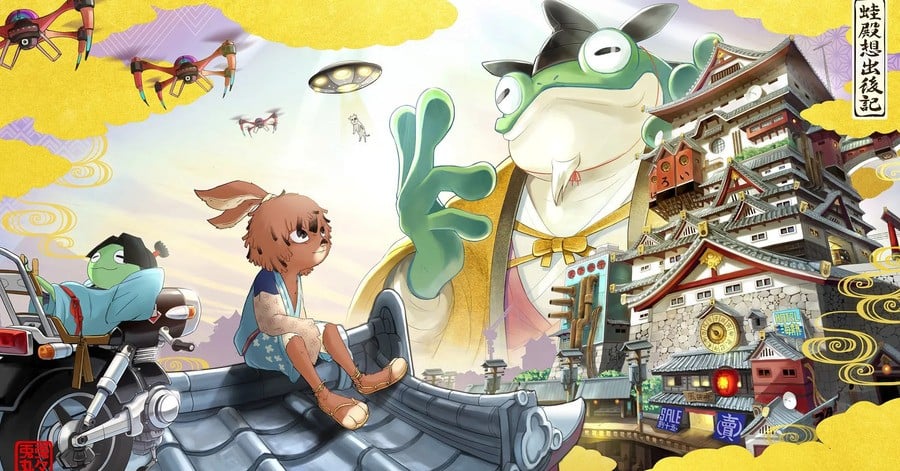
I think that when a musician composes a rhythm game, if he or she goes through detailed ideas, goes through trial and error, creates specifications, and writes code, I think that even if the gameplay is similar to others, it will appeal to a unique feeling.
Time Extension: Right now, you seem to be mostly focused on your music career again, we’re wondering, is there any chance of you returning to games in the near future?
Matsuura: I don't have anything in mind, so I guess not.
Time Extension: Are you not tempted at all by the arrival of the Nintendo Switch 2, for example? It’s been a while since you released a game on a Nintendo platform. I believe ‘Major Minor's Majestic March’ was the last project, from 2009.
Matsuura: I'm not interested in a "switch" itself. I am interested in the darkness that is illuminated by the light that it turns on.
Time Extension: So you’re more interested in the act of creation rather than the tools themselves?
Matsuura: That's true, but creation without tools is almost impossible, so tools are also important. I want a mental switch that will turn on a new light inside me. I hope that Nintendo Switch 2 is that.
Time Extension: Thank you for again your time Matsuura-san! (To our readers, if you want to find out more about Matsuura-san’s work, you can follow him on Facebook and Instagram. He's also told us his latest live show is scheduled to be released on Amazon Japan soon.)

